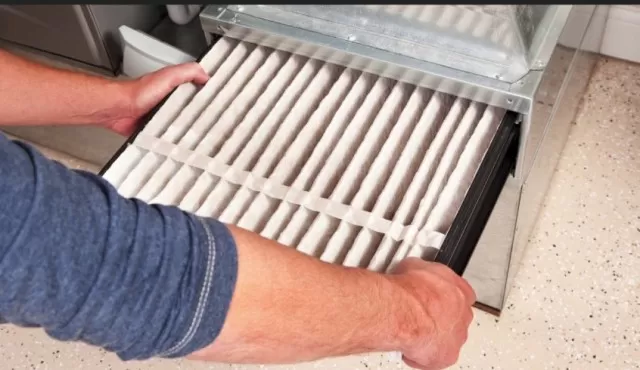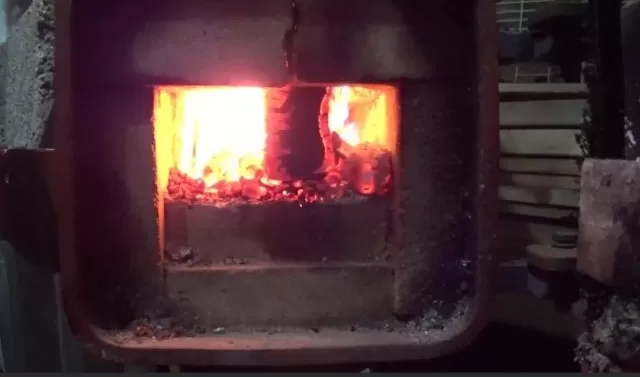Unintentional Energy Waste: Are You Guilty?In the pursuit of both environmental stewardship and fiscal prudence, you’ve embraced the foundational principles of home energy conservation: extinguishing lights upon leaving a room, orchestrating errands to maximize fuel efficiency, and optimizing your dishwasher usage.
Yet, even as you diligently adhere to these cornerstones, there remains an uncharted territory of energy-saving potential waiting to be harnessed. Beneath the surface, a handful of latent energy-draining habits may be inadvertently contributing to elevated utility costs. Fear not, for within this discourse, lies an exploration of these concealed culprits and A Guide to transforming your routines for a brighter, more efficient future.
While your commitment to energy consciousness is evident, it’s crucial to acknowledge that room for growth persists. Behaviors that subtly undermine your efforts may be causing unnecessary expenditure and ecological strain. Recognizing and rectifying these habits represents a pivotal step towards realizing a more sustainable lifestyle and unlocking economic benefits.
Serving the Needs of Vampires: Unmasking the Energy Drain

In the age of technological marvels that enhance our daily lives, a shadowy drawback looms large: the inconspicuous siphoning of energy by electronic devices even during their idle moments.
Termed as “vampires” or “ghost loads,” these elusive energy thieves are epitomized by the persistent, unblinking red or blue lights that adorn our household electronics. Astonishingly, these insidious culprits might contribute to as much as 10 percent of the overall energy consumption within an average home.
Among the most frequent offenders are wireless telephones, answering machines, computers, printers, televisions, and cable boxes.
By extinguishing this energy drain, not only can you conserve valuable energy resources, but you can also safeguard your hard-earned dollars.
Taking a proactive approach, such as powering off or unplugging these energy vampires when they are not actively in use, empowers you to make a meaningful contribution to energy preservation and financial prudence. Embracing these practices, you embark on a journey to illuminate the hidden realms of energy wastage and become a steward of both your environment and your wallet.
Clogged Filters Unveiled, Part 1: Unmasking the Energy Menace
When it comes to the world of air conditioning, a sinister villain often lurks in the shadows – the filthy air conditioner filter.
This seemingly innocuous component, when laden with dirt and grime, compels the unit to toil relentlessly, potentially inflating your total energy consumption by a staggering 5 to 15 percent. But fear not, for there exists a remedy – a simple practice that can mitigate this energy-eating menace.
Embrace the art of regular maintenance: a monthly ritual of cleaning or replacing your air filters during the cooling seasons.
By doing so, you grant your air conditioner the gift of prime energy efficiency, enabling it to operate optimally without straining under the burden of accumulated debris. Yet, the journey doesn’t end here.
As you engage in the ritual of filter care, cast your discerning gaze upon the coils – those unsung heroes of temperature regulation. Employ your vacuum’s might and cleanse these coils as needed, bestowing upon your unit the tools to hum along gracefully.
In this exposé, we embark on a journey to demystify the realm of clogged filters, illuminating the path to energy conservation and a well-functioning cooling apparatus.
Stay tuned for Part Two, where we delve deeper into the realm of maintenance mastery.
Grime Chronicles Unveiled, Part 2: Averting Heating Havoc

As we venture deeper into the realm of home maintenance, a new chapter unfolds – “Filthy Filters, Part Two.
” Herein lies a cautionary tale of dirty, obstructed furnace filters, orchestrators of inefficiency and indoor discomfort. Beyond the façade of inconspicuousness, these filters wield the power to disrupt your abode’s sanctity, compromising both energy efficiency and the quality of the air you breathe.
Behold their malevolent impact on indoor Air Quality and heating prowess.
The saga continues with a grim revelation: clogged furnace filters rank as the archenemy of HVAC systems, precipitating their downfall. Their nefarious ploy involves restricting the airflow into the furnace’s air handler, casting a suffocating shadow over the entire system’s performance.
Alas, the stage is set for catastrophe.
Fear not, for there exists a remedy – a simple yet vital act of devotion to your heating system’s well-being.
At the heart of this solution lies the consistent care of your furnace filters, to be cleansed or replaced no less than once each month. By doing so, you grant your heating system the power to operate with grace and efficiency, while safeguarding it against imminent failure.
But the journey towards harmony doesn’t conclude here.
Cast your gaze beyond the filters, to the realms of vents, returns, registers, and ducts. Armed with the weapons of dusting and vacuuming, you possess the means to alleviate the burden on your furnace, lightening its load and ensuring its longevity.
With this, the second chapter of our grime-laden saga draws to a close, revealing the path to a thriving heating system and a home imbued with comfort.
As we bid adieu to “Filthy Filters, Part Two,” anticipate the final installment, where we culminate our exploration with wisdom to carry into your home maintenance endeavors.
Inadequate Insulation Woes: The Unseen Thief of Comfort
As the wisdom of generations past reminds us, the importance of covering our heads in chilly weather is not to be taken lightly – for up to half of our body heat can escape if left uncovered.
In parallel, our abodes harbor a parallel tale, where the absence of sufficient insulation acts as a silent accomplice to the pilfering of precious warmth. Just as you would shield yourself with a hat before braving the winter chill, so too should your home don the armor of proper insulation, especially in its highest recesses.
The saga unfolds further through the lens of energy efficiency.
The illustrious Energy Star website imparts a crucial insight: the attic, akin to the headwear for your home, should boast a layer of insulation measuring at least 10 to 14 inches in thickness. This bulwark of insulation serves as a guardian against the escape of valuable heat, safeguarding your comfort and preserving the hard-earned dollars you invest in heating your dwelling.
Picture a world where your home remains snug and warm, where energy bills dwindle due to efficient heat retention, and where the specter of heat loss is quelled.
The mission lies in this often unseen but undeniably vital aspect of home maintenance – ensuring that your attic’s insulation hides the joists from view, heralding an environment where the chill of winter remains at bay.
So, heed the call to action: embrace the mandate to fortify your abode against temperature fluctuations and financial loss.
As the tales of headwear and insulation intertwine, you embark on a journey towards a cozier, more efficient home.
Aging Water Heaters: Unveiling an Energy Quandary

In the grand orchestra of residential energy consumption, water heaters play a formidable role, composing a staggering 17 percent of the total ensemble.
They take up the mantle of the second-largest energy consumer within homes, ushering in a paradox where the warmth they offer is counterbalanced by the energy they voraciously consume. This tale reaches its climax as the spotlight turns to a startling statistic: Over 41 million water heaters, currently in service, have gracefully aged to at least a decade old.
As we scrutinize this aging battalion, a glimmer of hope emerges – the Energy Star-certified models.
These modern marvels stand as the vanguard of efficiency, holding the potential to transform the energy landscape. The United States Department of Energy sheds light on an astounding revelation: exchanging these elder statesmen of water heating with their Energy Star-certified counterparts could translate to an astronomical annual cost reduction, tallying almost $10 billion.
Contemplate a realm where outdated water heaters, akin to aging relics, make way for innovative, energy-efficient champions.
A harmonious chorus of reduced energy bills and environmental stewardship emanates from this transformation. The stage is set for a future where comfort coalesces with conservation, where the legacy of old water heaters is rewritten in the script of sustainable progress.
Embark on this journey, a step towards modernization, as you navigate the path of replacing old water heaters with their Energy Star-certified successors.
Amid the numbers, the statistics, and the dollars saved, lies a symphony of responsible energy consumption that resonates with every drop of heated water.
*The information is for reference only.